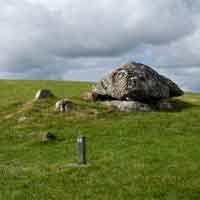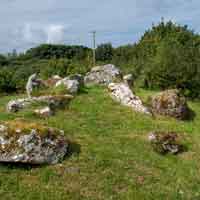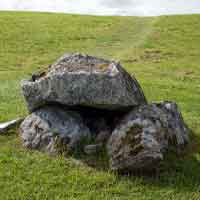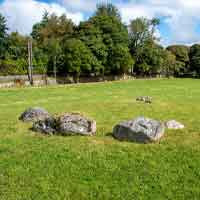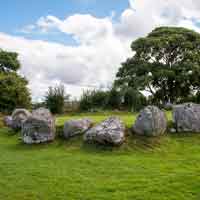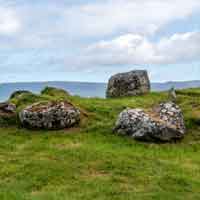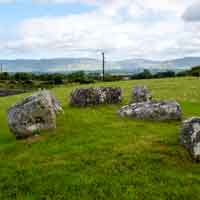Carrowmore is one of the four major passage tomb complexes in Ireland. It is located at the geographical centre of the Cúil Irra peninsula in County Sligo and 3 km west of Sligo town. The complex is about one kilometre north-south and 600 meters east-west. Most of the sites are 'satellite tombs' which surround the largest monument (Tomb 51, Listoghil), a huge cairn placed on a high point of the plateau. Carrowmore is one of the largest (in terms of the number of monuments) complexes of megalithic tombs in Ireland and contains the oldest used passage tombs, the earliest dated to approximately 3700 BC. Although Carrowmore is classified by archaeologists as being part of the Irish Passage Tomb Tradition, these monuments are not typical passage tombs. None of the tombs have lintel-covered, tunnel-like, passages that are a feature of most Irish passage tombs, and only the largest central monument (Tomb 51, Listoghil) possesses a cairn. In contrast to most other passage tomb cemeteries which are in commanding locations, it is evident that the monuments at Carrowmore were not built to be visible from a distance.
30 monuments survive in Carrowmore today. However, there may have been many more monuments in the complex originally. Most of these fell victim to quarrying and field clearance during the 18th, 19th and early 20th century. The sites were initially surveyed and numbered by George Petrie in 1837, while William Gregory Wood-Martin made the first recorded excavations in the 1880s. The original usage of the Carrowmore tombs is shown to have spanned the era circa 3750 BC to circa 3000 BC. The chambers contained the remains of multiple individuals. Almost all the Neolithic burials at Carrowmore appear to have been cremations with inhumations being only found at Listoghil. The tombs were re-used intermittently for burial and deposition of artefacts by the people of the Bronze Age and Iron Age a long time after the initial construction. It is still not clear where the people who built the Carrowmore passage tombs lived, but given the abundant resources of the Cúil Irra Peninsula, it is likely they lived on the Peninsula and in its immediate hinterland.
Carrowmore is the focal point of a prehistoric ritual landscape which is dominated by the mountain of Knocknarea to the west with the great cairn of Miosgán Médb (Queen Maeve's Tomb) at its summit. To the east is Carns Hill with two large cairns overlooking Lough Gill, and along the eastern boundary of the peninsula the Ballygawley Mountains have four passage tombs at their peaks. The various parts and features of this landscape were imbued with meaning to the people. Carrowmore, at the very centre of the Peninsula, would have had a significant symbolic role for the people living here. This was the place chosen as the sacred and religious centre for the population. One piece of folklore explains how the Carrowmore monuments were created. Local folklore has it that the Cailleach (hag or witch), flew from her home 'Teach Cailleach a Bheara' (another small passage tomb in the Ox Mountains) towards Knocknarea, carrying an apron full of stones with the intention of creating some enclosures for her animals. Unfortunately an accident befell the poor Cailleach and caused a great number of the stones to fall from her apron to the ground below. They landed in several piles over the landscape of Carrowmore and these became the monuments that we see today.
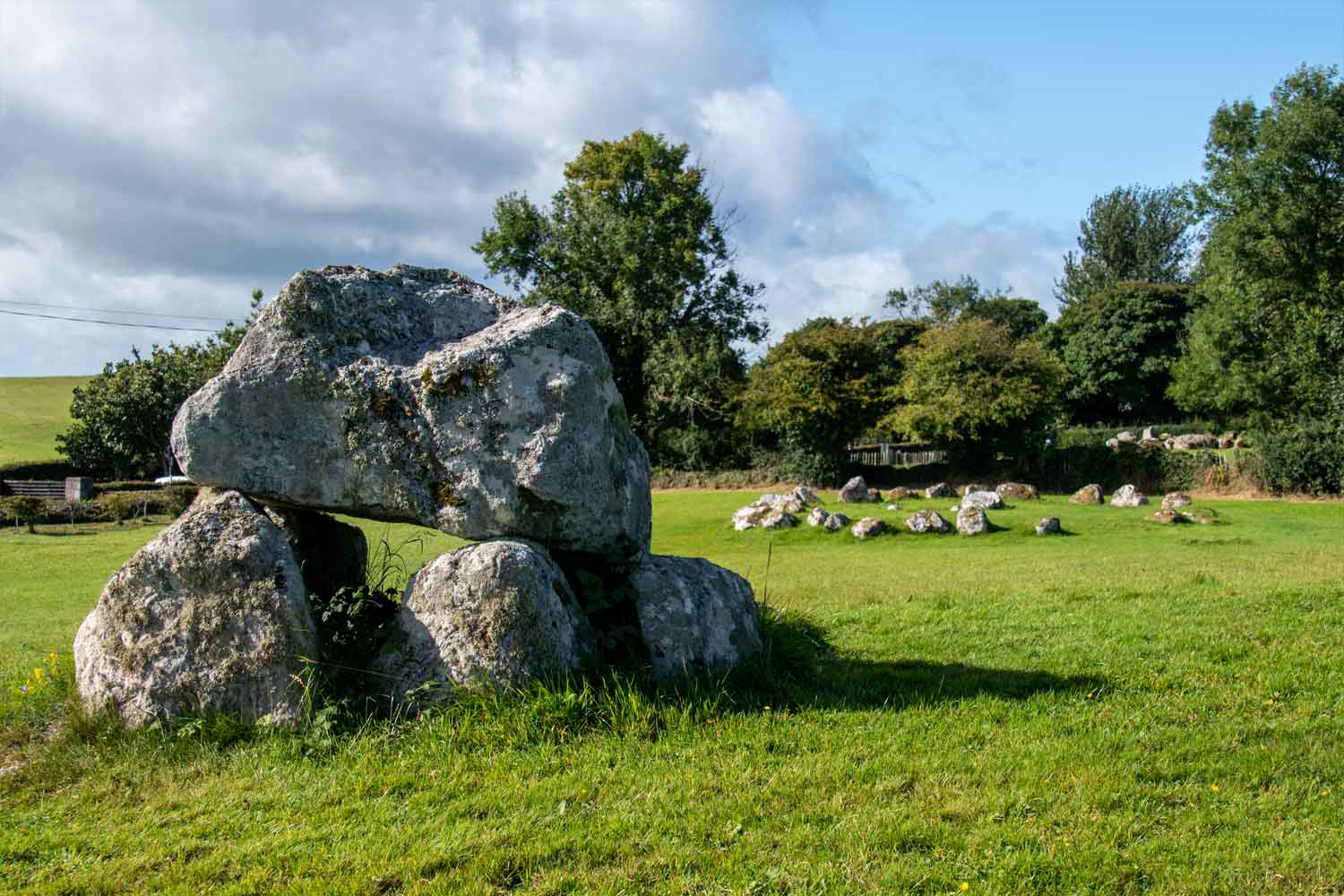



-M.jpg)



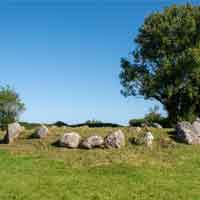
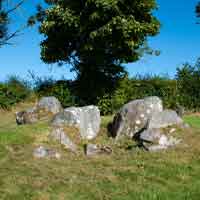
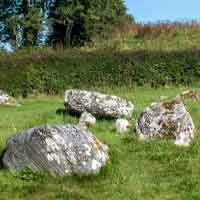
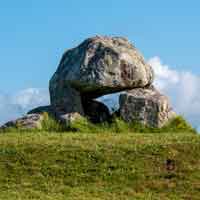
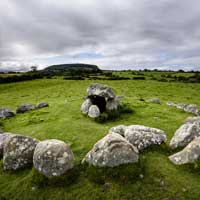
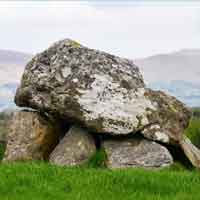
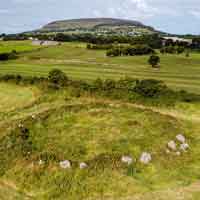
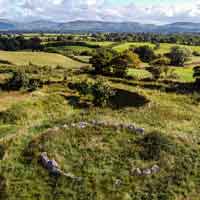
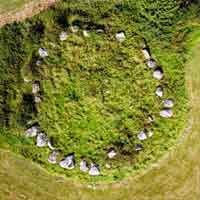
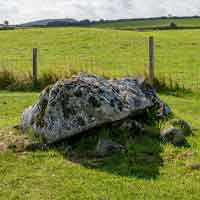
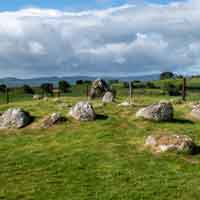
-T.jpg)
